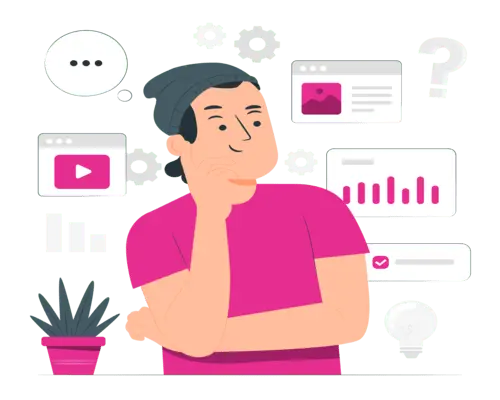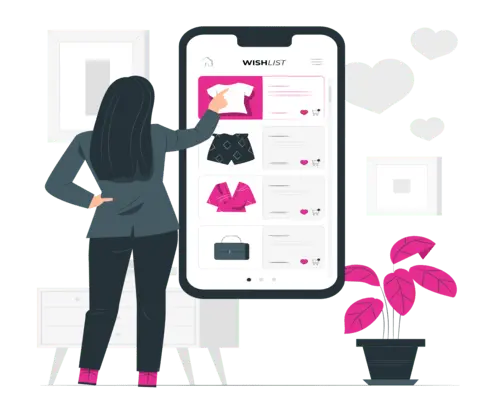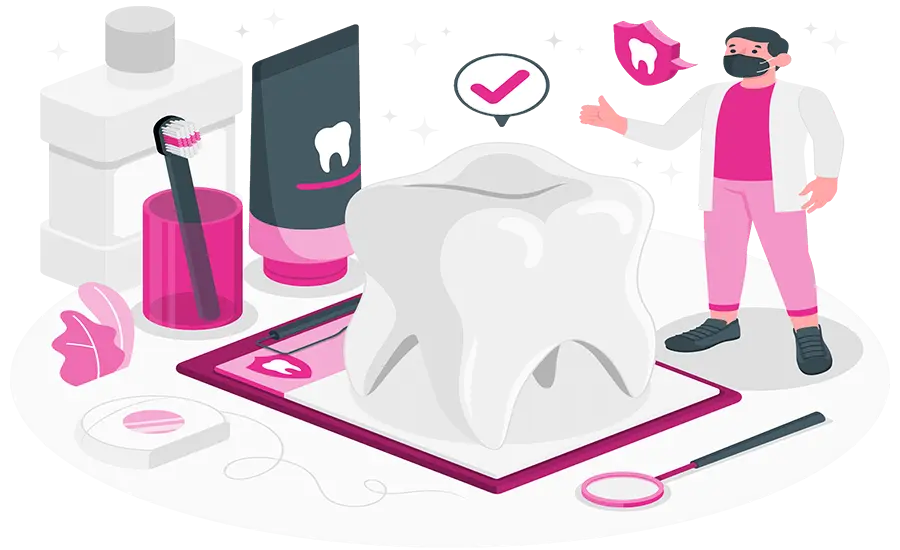Attracting new customers is one thing, but in today’s competitive ecommerce world, you need to do much more than just get people to your website. The most ingenious ecommerce marketers are doubling down on amplifying the lifetime value of your existing customers.
In this guide, we’ll dive deep into research and reveal how you can effectively develop a well-rounded ecommerce marketing toolkit—capable of not only capturing the interest of new customers but of driving them through the entire customer lifecycle.
Finally, you will get the answer to “How to Increase Ecommerce Sales”. Sounds good? Let’s dive in!
Table of Contents
ToggleSummary of Ecommerce Sale Strategies
| Objective | Strategies |
| Existing Customers | 1. Be Where Your Customers Are: SEO and targeted ads. 2. Remove Buying Friction: Simplify transactions. 3. Foster Loyalty: Cultivate relationships with feedback and emails. |
| Attract, Engage, Retain New Customers | 1. SEO Optimization: Improve visibility. 2. Content Marketing: Create engaging content. 3. Social Media Marketing: Engage on chosen platforms. 4. Paid Advertising: Use targeted ads. 5. Influencer Marketing: Collaborate with influencers. 6. Email Marketing: Utilize emails for direct contact. |
| Convert Visitors into Buyers | 1. Website Optimization: Improve user experience. 2. Good Descriptions and Images: Provide detailed info and high-quality images. 3. Promotions and Discounts: Use incentives for first-time buyers. 4. Live Chat and Support: Offer quick assistance. 5. Personalization: Customize based on user behavior. 6. Cart Abandonment Emails: Remind customers of abandoned carts. |
| Retain Existing Customers | 1. Loyalty Programs: Implement tiered programs. 2. Email Marketing: Use personalized emails. 3. Upselling and Cross-Selling: Suggest additional products. 4. Customer Feedback and Support: Act on feedback and provide responsive support. |
How to Increase Ecommerce Sales with Existing Customers
Making your online store successful is not about new customers only. It concerns your current audience who has already bought from you so try to convince them to make repeat purchases.
71% of consumers are more likely to buy a product or service from a name they recognize
Here are 3 key strategies to unlock your target market’s full buying potential:
1. Be Where Your Customers Are
Do not wait for them to discover your shop. Locate their online sources, for example, Google, Amazon, and other marketplaces.
Invest in smart SEO optimization and targeted ad campaigns to have your product pages, listings, and content stand out in these locations. More brand awareness means more chances to convert.
Explore our SEO services to supercharge your online store
2. Remove Friction from the Buying Journey
Make the shopping transaction simple and transparent. Visualize your target customer as you.
Is the required information such as shipping costs, return policies, and detailed specifications readily available?
Addressing the potential sources of concern first builds trust and removes obstacles to purchase.
3. Foster Customer Loyalty beyond the First Purchase
Make sure your sales funnel doesn’t end at the checkout point. Adopt a clear scheme of cultivating existing clients. This may include asking for post-purchase comments, sending targeted email offers, and actively developing relationships.
How to Increase Ecommerce Sales With New Customers: 3 Steps
Getting new customers in the online retail environment is no longer just significant, it is critical. In short, consider them to be the new wave of oxygen used to fill up your company and breathe new life into it.
Let’s discuss the ways to increase Ecommerce sales with new customers:
Step 1: Attract New Customers
The first step to increasing ecommerce sales with new customers is implementing effective marketing strategies to attract them. Here are the 6 ways to attract new customers
1. SEO Optimization
SEO optimization increases search engine results ranking, thus, making your website highly visible and easily accessible to potential consumers. This improves organic traffic, visitors actively look for products similar to yours and discover your page. It is a large upfront investment with long-term savings.
Implementation Steps
- Carry out keyword research using tools such as Google Keyword Planner to find the keywords people use to search for products in your niche.
- Optimize your website content and meta tags (title, description) with the chosen keywords.
- Better site structure – include a clear hierarchy and use internal linking to improve user experience.
- Since Google prefers mobile-friendly sites, make sure your website is mobile-ready.
- Get backlinks from good sites that will make your domain authority grow powerfully.
- Keep your website current with new content containing some of the target keywords for site relevance. Boost your sales with our expert SEO strategies for Ecommerce in your location.
2. Content Marketing
Content marketing benefits Brand Awareness and Positioning Your Business as an industry authority. Content that grips customers can lead to retaining them on-site which also factors track SEO positively.
Implementation Steps
- Find the primary interests of your target audience as well as their key problems.
- Design a content strategy that manifests thematic interests and contributes counter-workable solutions.
- Create different kinds of content—blog posts, videos, infographics, podcasts—to satisfy various tastes.
- Measures the success of content using analytics and adapts strategy to the observations.
3. Social Media Marketing
Social Media marketing can enhance brand awareness and reach out to a pool of potential clients. It lets you interact directly with your audience and attracts customers to your online shop.
Implementation Steps
- Select social platforms that your target market uses the most.
- Create a regular posting schedule to retain visibility and engagement.
- Publish a variety of content forms including promotional content as well as education and entertaining content.
- Interact with followers by responding to their comments and messages quickly.
- Invest in paid targeted ads to increase the audience base and run purpose-driven campaigns.
4. Paid Advertising
Paid advertisements lead to immediate visitors and can be highly scaled. Using targeting options that allow for high accuracy you can choose the audience by interest, demographic, and behavior.
Implementation Steps
- Select the relevant ad platform whether it be Google Ads, Facebook, Instagram, etc that correlates with where your audiences are spending their time.
- Clearly describe your campaign objectives – increase website visits or drive leads – or sell more, depending on the type of campaign.
- Establish targeting parameters to focus on your ideal customer profiles.
- Develop engaging ad copy and curative that will appeal to your target audience.
- Check the performance of the monitors on a regular basis and make adjustments for a higher ROI.
5. Influencer Marketing
Influencer marketing taps into the existing trust and reach of social media influencers. Their support will make your brand recognized and appeal to their followers to buy your products thus increasing the chances of converting the followers into customers.
Implementation Steps
- Find influencers whose audience corresponds with your target customer.
- Reach out to these influencers with a proposal that aligns well with their content style and audience interests.
- Negotiate the terms of the partnership, including the nature of the content and compensation.
- Craft a campaign that feels authentic to the influencer’s style while showcasing your products effectively.
- Measure the impact of the campaign on traffic and sales to determine its effectiveness.
6. Email Marketing
Email marketing creates direct contact with potential buyers who have previously shown interest in your brand. It is cheap and delivers great ROI because it continuously keeps the audience updated.
Implementation Steps
- You should utilize a service provider of email marketing to manage your subscriber list and send an email.
- Create visually appealing email templates that capture the essence of your company and are optimized for mobile.
- Divide your email list by targeting personalized content based on users’ behavioral patterns and preferences.
- Inform, educate, entertain, humor, and motivate through the gamut of educational content, special offers, and new product announcements.
- Test various subject lines and CTAs to enhance open rate and click-through.
Also, the 9 latest e-commerce marketing strategies can help to increase your reach.
Step 2: Converting Visitors into Buyers
1. Website Optimization
A website that has been well-optimized gives a better user experience and as a result, engagement and conversions are higher.
Quick loading speeds and a simple navigation structure is important in keeping potential customers from bouncing off your site.
Implementation Steps
- Check your website design and make sure it is up-to-date in terms of the standards and look and feel.
- Simplify checkout to minimize friction to reduce cart abandonment rate.
- Ensure your images are compressed and use suitable hosting to guarantee fast website loading.
- Make your design responsive to accommodate mobile and tablet users.
- Use A/B testing to identify the best layout and design options that help support conversions.
2. Good Product Descriptions and Images
Correspondingly, bright and easily understandable product descriptions combined with good-quality images can contribute to the high attractiveness of your products.
They facilitate in answering questions concerning customers thus reducing uncertainty that ultimately increases the possibility of purchase.
Implementation Steps
- Provide product description in detail by highlighting main features and advantages.
- Use bullet points to make content more scannable.
- Add several detailed high-resolution pictures of the product which also allows a consumer to assess it in different ways.
- Try incorporating user-generated content in the form of reviews and ratings to gain trust.
- Make your product descriptions SEO-friendly to enhance their ranking on search engines.
3. Offer Promotions and Discounts
Incentives such as promotions and discounts can be very encouraging for first-time buyers and can create instant sales hype. They can also become a useful incentive for promoting discount offers for clearing out old stocks and larger value purchases. Also, explore proven marketing ideas for online stores in 2024.
Implementation Steps
- Choose the kind of promotion beneficial for your business (percentage off, buy one get one, etc.).
- To avoid confusion, be specific in the terms and conditions for your promotion.
- Feature the promotion prominently on your website and via your marketing resources.
- To achieve maximum impact, time your promotions to coincide with holidays or special occasions.
- Evaluate the promotional campaigns to understand their success in the market.
4. Live Chat & Customer Support
Providing help promptly through Live Chat can clear confusion or hesitancy among the customers and prevent lost sales.
Implementation Steps
- Put a live chat on your website with available customer support.
- Train your team to ask common questions and develop scripts to achieve effective communication.
- Establish automatic greetings and replies to handle day-to-day requests without an agent’s presence.
- To better the shopping experience, analyze chat logs for common problems or concerns that could be handled on-site.
5. Personalization
Personalization shopping makes customers more engaged with greater satisfaction. Retaining customers through follow-ups may lead to higher conversion rates and average order values as well as span of engagement increases.
Implementation Steps
- Utilize data analytics tools to monitor user behaviors as well as browsing patterns.
- Software implementation solutions that involve generating individualized advisory messages about the products that the consumer needs.
- Customize email marketing campaigns based on personal preferences and purchasing habits.
- Focus on returning visitors by designing individualized landing pages for them.
- Constantly improve your personalization algorithms following the customers’ feedback and purchase habits.
6. Cart Abandonment Emails
Cart drop-off emails are used to remind customers who have abandoned items in their shopping carts. They can help restore lost sales and reveal the reasons why customers are leaving their carts.
Implementation Steps
- Create an email auto-sequence to be initiated after a certain interval of inactivity during the checkout process.
- A friendly and transactional message should convince customers to finalize their order.
- It should be followed by a conspicuous call to action leading customers back into their cart.
- Provide a time-based discount or free delivery to motivate buying.
- After analyzing the results of cart abandonment emails, try out different possible solutions to achieve better performance.
Step 3: Retaining Existing Customers
1. Loyalty Programs
Once a consumer becomes a part of the loyalty program, he/she will continue to patronize the environment and will end up contributing more to the customer’s lifetime value. They also act as an attraction factor to draw customers to choose your brand over competitors.
Implementation Steps
- Decide the management structure of your loyalty program detailing the structure of accruing, and positioning the redemption of benefits or rewards.
- For your current customers, advertise the program by emailing them, social media, and the website.
- Make special offers or rewards available to loyalty program members only.
- Organize the program so that it is comprehensible and the elements of participation are accessible.
- Refer to the program’s effectiveness, as regularly as possible, to reflect customer feedback and participation rates.
2. Email Marketing for Retaining Customers
Email marketing helps maintain your brand and already existing customer affinity. This act can be employed to develop a customer-friendly relationship and motivate them to come back again since they receive custom-made messages.
Implementation Steps
- Turn to your target market by gathering information on the behavior of consumers and use it to segment your email list based on buying history.
- Develop campaigns targeted to the needs and interests of each of the segments.
- Send periodic notifications informing about new products, company news, and special offers for subscribers.
- Engage in celebrating customer milestones such as membership anniversaries that contribute to building a sense of belonging.
- Typically on campaigns; monitor KPIs such as open rates and click-through rates to measure its performance.
3. Upselling and Cross-Selling
Upselling and cross-selling suggest additional products to customers so that they buy other products as well. It can add up to an increase in the average order value and improve the satisfaction level of the customers.
Implementation Steps
- Behind analyzing customer purchase history look for upsell and cross-sell opportunities.
- Suggest relevant products during checkout or emails sent post-purchase.
- Train your customer service agents to realize opportunities for upselling and cross-selling when dealing with clients.
- Package complementary products into bundles with a discount as an incentive.
- Provide personalized recommendations based on customer preferences and their behavior on your website.
4. Customer Feedback and Support
Soliciting and acting on customer feedback demonstrates that you value their input and are committed to improving their experience. Providing responsive customer support helps build trust and loyalty.
Implementation Steps
- Implement user-friendly feedback mechanisms, such as surveys or feedback forms, at various customer touch points.
- Address customer feedback promptly and make necessary changes to your products or services when feasible.
- Provide multiple channels for customer support, including email, phone, and live chat, to offer convenience and choice.
- Train support staff to handle inquiries efficiently and with empathy, ensuring customers feel heard and valued.
- Regularly review customer support interactions to identify areas for improvement and training opportunities.
Top Financial Experts’ Advice for Customer Retention
| Expert | Quote | Key Takeaway |
| Bob Burg | “Focus on giving value without expectation of immediate return. Your generosity will build trust and attract loyal customers.” | Prioritize value over immediate sales. Build trust and loyalty through genuine helpfulness. |
| Gary Vaynerchuk | “Obsess over your customers and provide exceptional service. Build relationships first, then sell.” | Customer satisfaction is paramount. Focus on building relationships and exceeding expectations before promoting sales. |
| Mary Meeker | “Mobile dominates e-commerce. Prioritize a seamless mobile experience for your customers.” | Optimize your website and shopping experience for mobile devices. This is where most customers browse and buy. |
| Laura Uhlir | “Personalization is key. Use data to create a unique experience for each customer.” | Leverage customer data to tailor product recommendations, marketing messages, and overall experience for individuals. |
Wrapping Up
I hope this guide has provided you with a framework for how to grow the sales of your online store with a strategy to acquire new customers as well as one that is sustainable over time.
Your approach should vary according to the nature of the business and the resources at your disposal.
Therefore, do not be afraid of making mistakes- experiment, analyze, and tweak as you walk towards making e-commerce a sustainable practice and scaled business.
Finally, you have the solution to the question in your mind “ How to increase ecommerce sales”. Do you have more questions? You can state that in the comments section.
Related Articles
Ecommerce Profit Margin | Ultimate Guide for Long-Term Success










